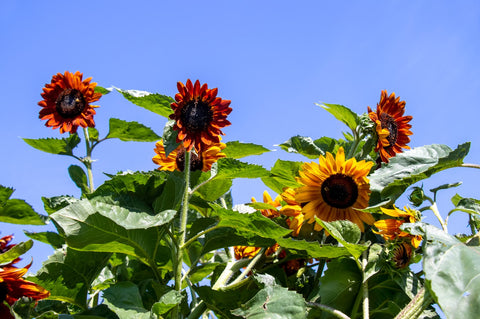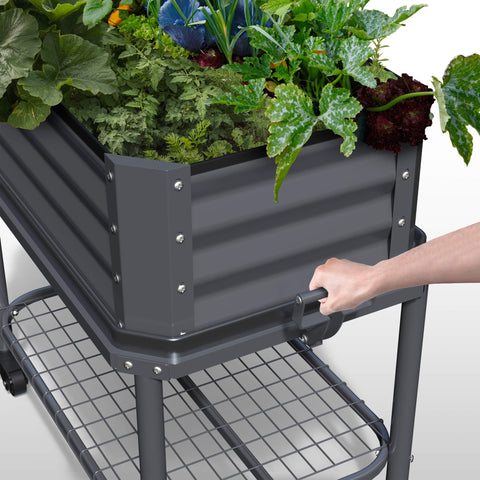As the vibrant colors of summer start to fade and the crispness of fall begins to fill the air, it's time for gardeners to shift their focus from tending to warm-weather crops to preparing their raised bed gardens for a successful fall season. While the days may be growing shorter, the opportunities for a bountiful harvest are still abundant. In this comprehensive guide, we will walk you through the essential steps to ensure your raised bed garden thrives throughout the autumn months, yielding an array of delicious and nutrient-rich produce.The following content also has some reference value for raised garden beds.

1. Assess Your Garden's Needs
Before you begin any fall preparations, take some time to assess the current state of your raised bed garden. Look for signs of plant diseases, pest infestations, and nutrient deficiencies. Addressing these issues early on will lay the foundation for a healthier garden in the coming months.
2. Remove Spent Summer Plants
As summer draws to a close, it's essential to clear out any spent or diseased plants from your raised bed garden. Remove plants that are no longer productive and dispose of them properly to prevent the spread of diseases. This step will create space for new fall crops and improve air circulation within the garden.
3. Amend the Soil
Healthy soil is the cornerstone of a thriving garden, and fall is the ideal time to give your soil a boost. Test the soil's pH and nutrient levels, and amend it as necessary. Adding compost, well-rotted manure, or other organic matter will improve soil structure, water retention, and nutrient content. Work these amendments into the top few inches of soil to provide a welcoming environment for fall crops.
4. Plan Your Fall Garden Layout
Careful planning is key to a successful fall garden. Consider the specific climate and frost dates of your region to determine the best crops to plant. Some cold-hardy crops, such as kale, spinach, carrots, and beets, thrive in the cooler temperatures of fall. Plan your garden layout, taking into account the mature size of each crop, spacing requirements, and companion planting principles.
5. Plant Cool-Season Crops
Once you've determined your fall garden layout, it's time to start planting. Sow the seeds or transplant seedlings of your chosen cool-season crops according to the recommended planting depths and spacing. Keep in mind that fall plantings may require slightly deeper planting depths than spring crops due to the cooler soil temperatures.

6. Mulch and Water
To help retain soil moisture and regulate temperature, apply a layer of organic mulch, such as straw or wood chips, around your newly planted fall crops. Mulch also helps suppress weed growth, which can compete with your crops for nutrients and water. Be diligent about watering your fall garden, as cooler temperatures and increased rainfall can sometimes create a false sense of hydration. Water deeply and consistently to encourage healthy root development.
7. Protect from Frost
As fall progresses, the threat of frost becomes a concern. Be prepared to protect your crops by covering them with frost blankets or row covers when frost is predicted. These covers can provide several degrees of protection, extending the growing season and allowing your crops to flourish even as temperatures drop.
8. Continue Pest Management
While fall may bring relief from some pests, others thrive in the cooler weather. Keep a close eye on your garden for signs of pest activity, such as chewed leaves or discolored foliage. Implement integrated pest management strategies, such as handpicking pests, introducing beneficial insects, or using organic pest control methods, to keep your garden healthy and pest-free.
9. Practice Regular Maintenance
Routine maintenance is crucial to the success of your fall garden. Regularly check for signs of disease, water your crops consistently, and provide support for plants that may require trellising or staking as they grow. Remove any weeds that manage to sprout despite the mulch and thin out overcrowded areas to ensure adequate airflow and sunlight.
10. Harvest and Extend the Season
As your fall crops mature, begin harvesting when they reach their peak size and flavor. Don't hesitate to start harvesting even if you're not planning to consume the entire crop immediately. Some crops, like kale and spinach, actually become sweeter after exposure to frost. Extend the harvest season by successively planting quick-maturing crops or utilizing cold frames and hoop houses to create a more controlled microclimate for your garden.
11. Prepare for Winter
As the fall season winds down and temperatures drop, it's time to start thinking about winterizing your raised bed garden. Clean up any remaining plant debris and add a layer of compost or mulch to protect the soil from erosion and freezing. Consider planting cover crops, such as winter rye or clover, to further improve soil health and prevent nutrient loss over the winter months.
12. Reflect and Plan Ahead
With your raised bed garden prepared and your fall harvest underway, take a moment to reflect on the season's successes and challenges. Make note of which crops performed well and which ones could use some adjustments in the future. Use this information to refine your gardening practices and create an even more productive garden for the following year.
In conclusion, the transition from summer to fall is an exciting time for gardeners. By following these comprehensive steps, you can ensure that your raised bed garden remains vibrant and productive throughout the autumn season. With careful planning, proper soil preparation, and diligent care, you'll be rewarded with a bountiful harvest of nutritious and delicious fall crops that will bring warmth and flavor to your table during the cooler months. Happy gardening!










